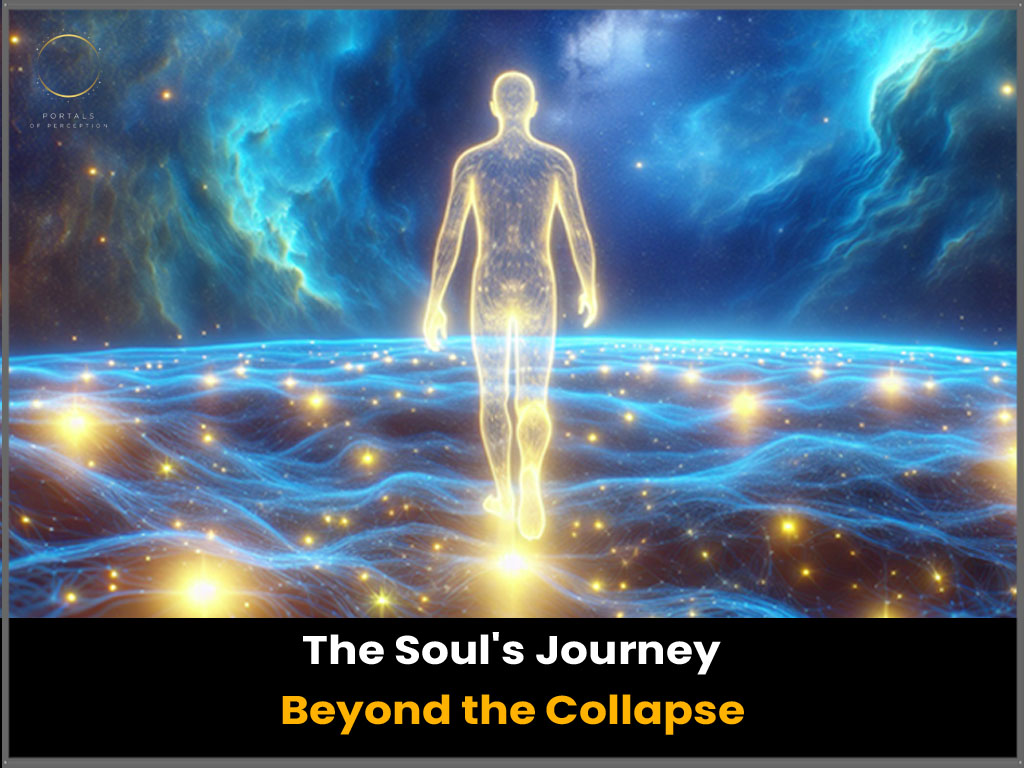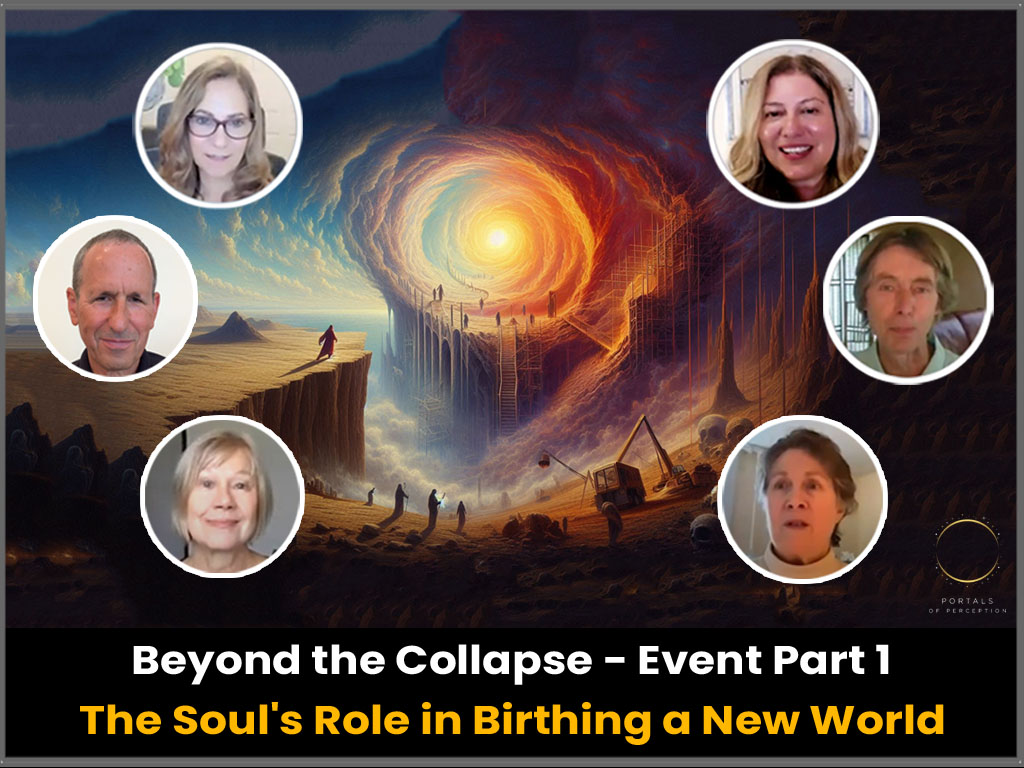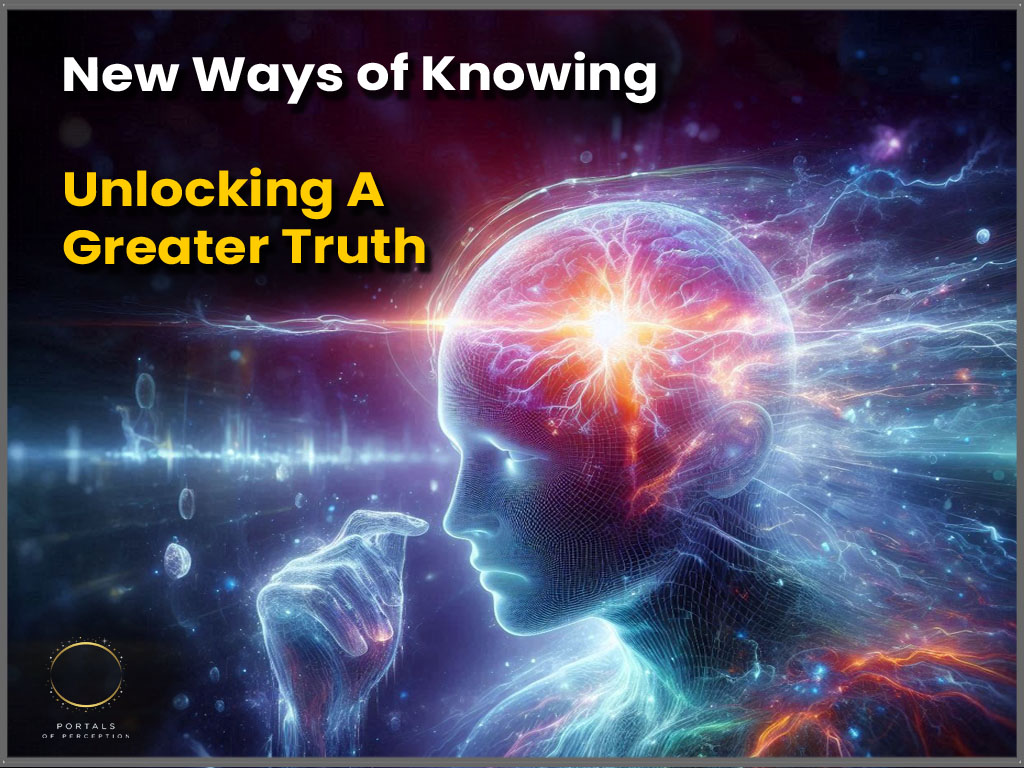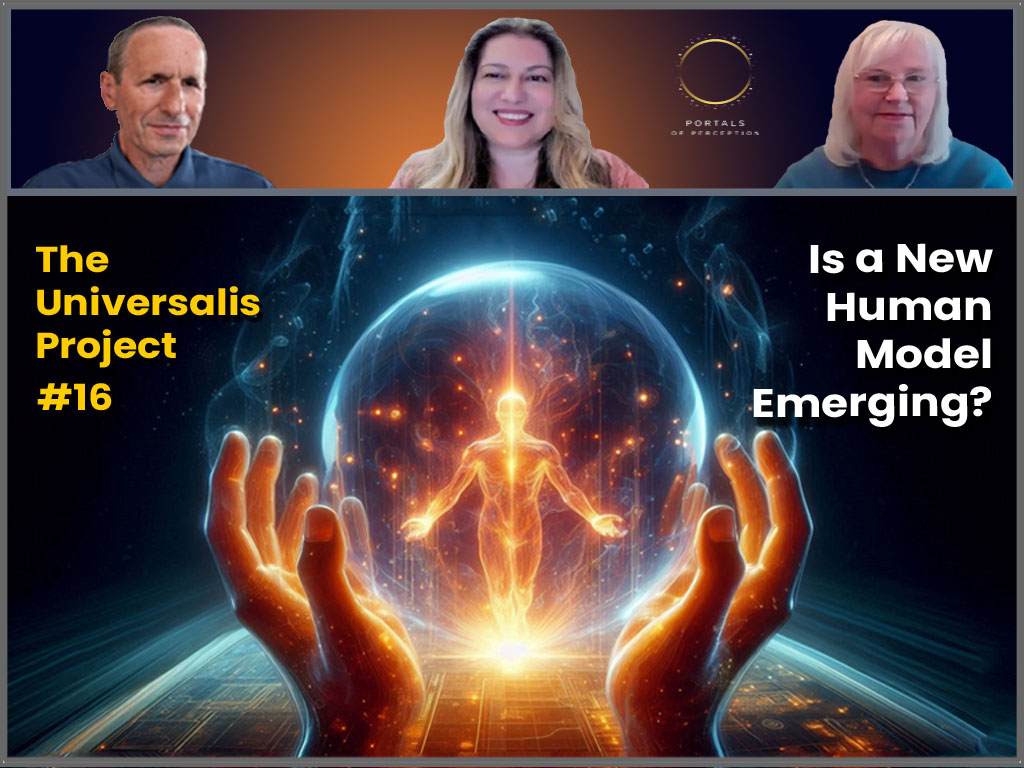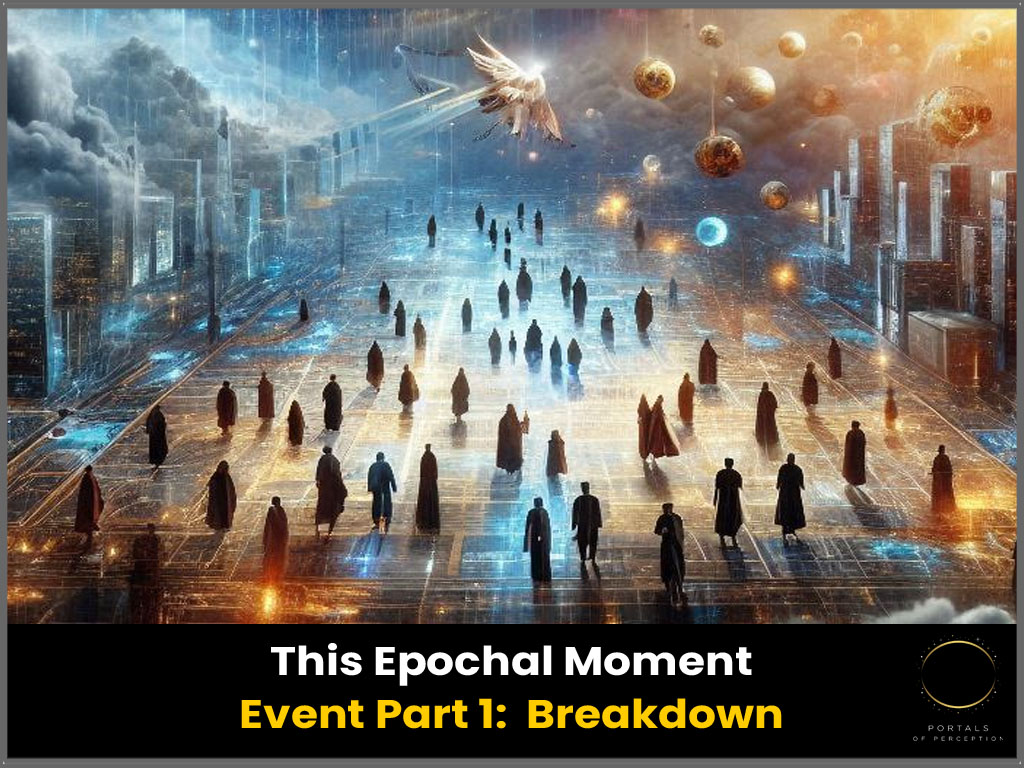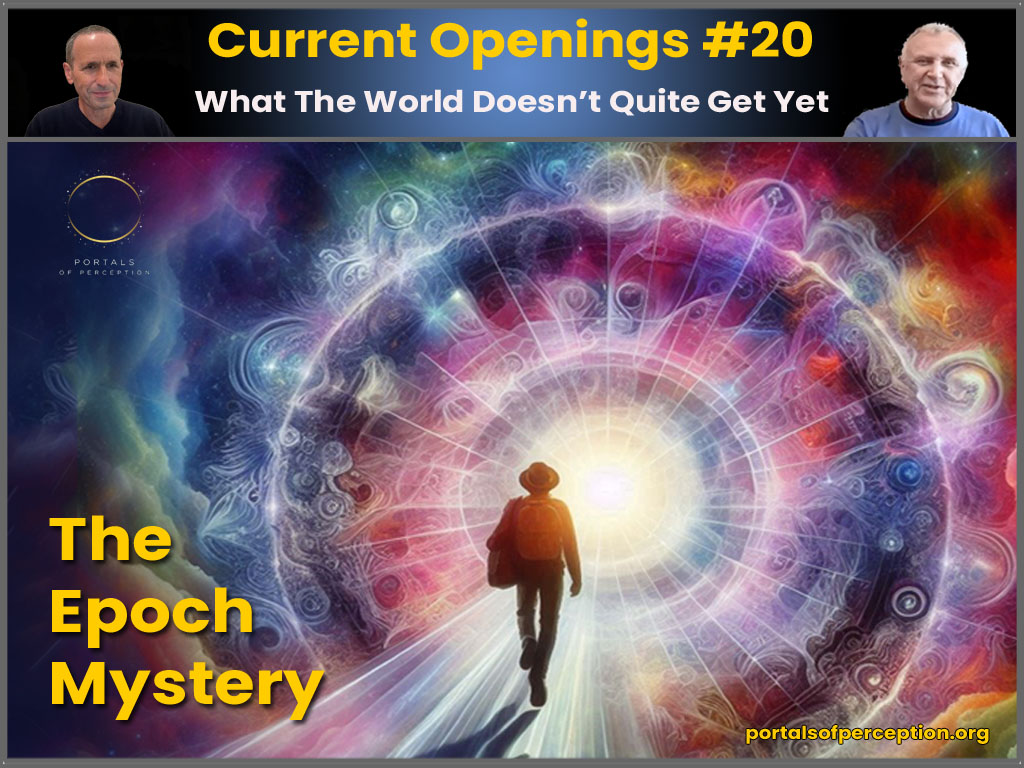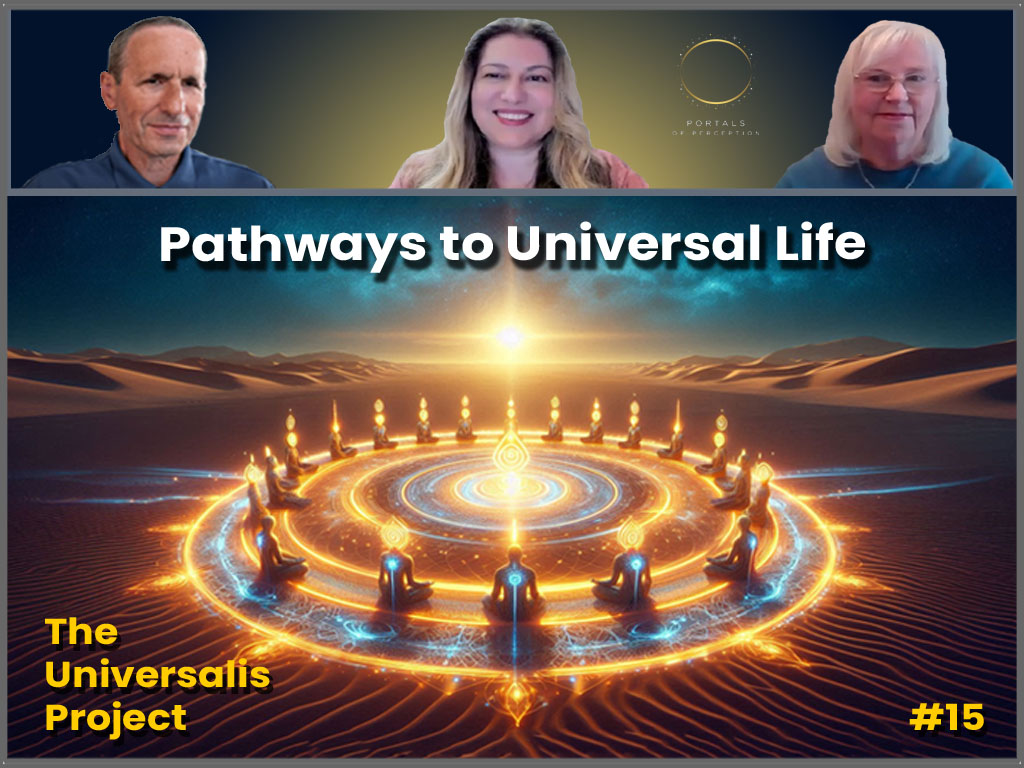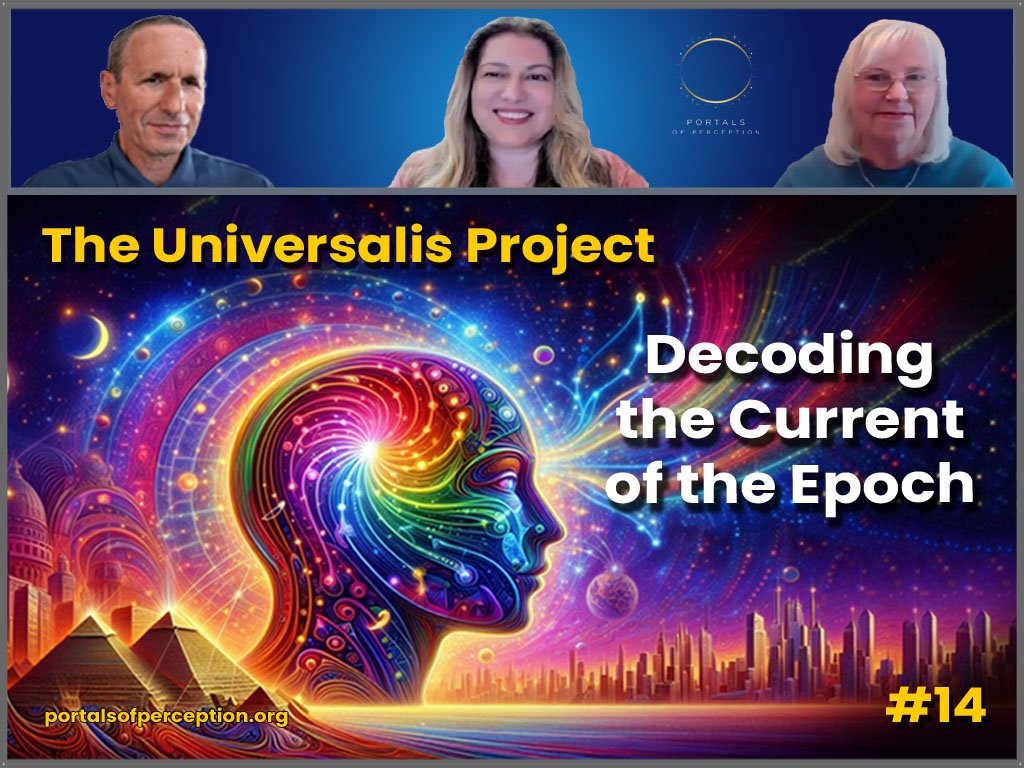
What Catalyzed This Inquiry to Verify Knowledge?
Before we delve into the “Verification Problem,” Aviv Shahar sets the stage by describing how this exploration was catalyzed:
During a Portals of Perception team meeting, a team member shared a striking observation: “It feels as though the body of work that’s been developing — in the Universalis Project, Portals Into the Soul, The Current Opening Series, and other recordings and writings — has now reached a point of real significance and substantia. This work is ready to meet people and look them straight in the eye with stature, strength, and conviction.”
Naturally, this prompts essential questions:
- Where does this knowledge come from?
- How is it sourced?
- Can I trust it?
- What will be the outcome if I follow these threads?
This was the first nudge toward tackling the verification problem.
The second nudge came the next morning, when I recorded a discussion with metamodern philosopher Brendan Graham Dempsey. We were exploring and reflecting on the six layers of Jesus: historical, scriptural, cultural ethos, parable, archetypal, and the esoteric.
The plan for this “Religion and the Esoteric” conversation was to use the six layers of Jesus to describe two seminal events in the evolution of the Christian story: the Transfiguration and the Resurrection. I wanted to approach these core events through an esoteric perspective, which meant introducing the exoteric, mesoteric, and esoteric framework. We demonstrated this understanding in earlier Portals dialogues, including Current Openings Episodes #1, and again in Episode #21, “The Conductivity Mystery”.
Brandan commented that “Well… we're making different claims on reality, and when we make claims on reality, there has to be some verification system, which is the conundrum of knowledge.” This further alerted us to the need to explain how we verify knowledge, using a bit of the rigor of the scientific inquiry.
The third nudge soon appeared during an event with the Epoch Journey network. The group's focus on both internal and external world dynamics reinforced the urgency of exploring how we validate knowledge, including esoteric.
We also recognized a broader context. People typically evaluate the credibility of online content through three validation lens — the author’s:
- Extensive reading and synthesis work.
- Repeated scientific experimentation.
- Channeled insights.
Yet, as highlighted in conversations like “The Teacher’s Journey with Sarah McCrum,” our approach differs from the increasingly popular practice of channeling. Rather than surrendering one's agentic sovereignty to an external entity, we emphasize taking full responsibility for our words — even when they arise from unconscious layers — which calls for a robust and integrated verification system.
Prompted by these three nudges, I felt called to articulate a comprehensive verification framework — one that has long been operating in the background but had not been consciously codified until now. I invited Karen Heney and Kyriaki Nikandrou to join this exploration, which unfolded through the two Universalis conversations.
Foundations of Verification: The Scientific Method in Nine Steps
With Aviv’s reflection on how this journey of discovery began, let us now turn to the foundations of the verification process. In the ancient world, the threefold pursuit of truth and knowledge — what we now distinguish as science, religion, and philosophy — was one unified, integrated whole, working in concert. The search for objective knowledge as it emerged through the Renaissance and the Enlightenment gave rise to the scientific inquiry and its method. In the process, it catalyzed a third-person perspectival initiation. As we will shortly see, we can trace the seeding of the Universalis human to this point. Let us appreciate the scientific method, which can be described in nine steps:
- Observing phenomena
- Asking questions
- Researching answers
- Formulating hypotheses and predictions
- Conducting experiments
- Analyzing data
- Revising theories
- Drawing conclusions
- Applying findings
We're describing here the rigorous verification system of the scientific method. Take, for example, the enduring mystery of water. From the beginning of time, people have marveled at how water transforms: when exposed to cold, it becomes ice; when heated, it turns to steam. What is it about water that allows it to shift between these three states — solid, liquid, and gas?
In the 18th and 19th centuries, numerous theories emerged to explain this phenomenon. Many were eventually disproved. A major breakthrough came in 1935, when Linus Pauling proposed that in the crystal structure of ice, water molecules arrange themselves in a hexagonal lattice. This configuration creates more space between the molecules, which is why ice floats on water.
Later, Pauling was awarded the Nobel Prize in Chemistry in 1954 for his groundbreaking work on the nature of chemical bonds, deepening our understanding of molecular structure. This progression illustrates the essence of the scientific method — where one theory builds upon or supplants another — and how its rigorous process of verification and measurement enables us to uncover truths, such as how water transforms through its three states.
This brings us to the next two critical observations for our inquiry.
First, the success of the scientific method is undeniable and all around us. It has enabled extraordinary discoveries, vast bodies of knowledge, and breakthrough applications that have made much of the modern world possible.
At the same time, we must be honest and acknowledge the shadow side that accompanied the rise of scientific inquiry — a theme we trace deeply in Portals Into the Soul, Chapter Four. In the effort to liberate ourselves from dogmatic beliefs not grounded in observable, objective knowledge, we began to exteriorize truth and knowledge. In doing so, we privileged the telescope and the microscope — and by extension, sensory-based observation — while gradually disenfranchising inner ways of knowing, and what we might call the “interior-scope.”
In effect, we placed nearly 100% of our attention and authority in external knowledge and abdicated the interior. This gave rise to what we now recognize as the Great Separation, with all the consequences it has produced: the division between exterior and interior, and between the knowledge of the head and the knowing of the heart, soul, and spirit.
This is the dual legacy of the scientific method — its remarkable success, and also the side effects and shadows it cast along the way.

Let us now widen the lens beyond scientific inquiry alone.
What follows is a framework of seven kinds of knowing, forming the foundation we need in order to go beyond these as we map and decode the Integrated Verification System of Life.
The Seven Kinds of Knowing
This terrain has been explored in several Universalis conversations, including Universalis #17, where we mapped ten kinds of knowledge. What follows is an adjacent articulation — another approach to the discerning modes of knowing and knowledge.
Here are seven kinds of knowing that offer a framework for navigating the landscape:
1. Empirical Knowing
This is knowledge based on observation and acquired through sensory experience and experimentation.
You don’t need to be in a laboratory to conduct an experiment; simply by being human, each of us runs multiple experiments every day. Our lives themselves are empirical evidence of what we’re testing and learning in real time.
2. Rational Knowing
This involves logical and conceptual reasoning based on premises from which conclusions are deduced.
Rational conceptual reasoning and evaluation helps us solve equations, build arguments, and form consistent worldviews. It’s one of the foundational pillars of the scientific method, alongside empirical evidence.
3. Theoretical Knowing
This is knowledge built through abstraction, concepts, models, and frameworks — often layered upon previous layers of understanding.
It’s the domain of meta-theories and academic synthesis. Theoretical knowledge is often distanced from the point of origin — it’s derived, which can be a strength (offering abstraction), but also a limitation (disconnection from source).
We tend to call something “original” when it presents a new idea. But here, we reframe “original” to mean connected to origin — to source. The deeper inquiry is whether it's possible to access source knowledge directly, rather than through second- or third-hand derivations.
Thus:
• Empirical knowing is verified by observation and repeatable experiment.
• Rational knowing is validated through the coherence of logic and reasoning.
• Theoretical knowing gains legitimacy through its ability to abstract and extend prior knowledge.
4. Experiential Knowing
This is knowledge acquired through direct personal experience and reflection.
There is a specific kind of knowing that comes from the experience of swimming, and another from riding a bike. Hiking a desert versus a snowy mountain cultivates different lived awareness. These embodied experiences shape your perception and capacity to intelligently adapt to the ecology.
5. Intuitive Knowing
Intuition often arises as a spontaneous nudge or felt sense in the moment of need. It is informed by experience, instincts, and internalized pattern recognition.
Its power lies in immediacy — its limitation is the bias of past conditioning. Everyone uses intuition, even when they try to dismiss or override it.
6. Procedural Knowing
This is knowledge gained by learning to perform specific tasks or processes — it’s skill-based and verified through action.
You may not know how to bake a cake until you’ve done it a few times. The same goes for playing an instrument, driving a car, or mastering any craft. The key distinction here is repetition-based competence.
Its power lies in immediacy — its limitation is the bias of past conditioning. Everyone uses intuition, even when they try to dismiss or override it.
7. Relational Knowing
Relational knowledge arises from understanding connections — between people, within systems, and across dynamic interactions.
For example, knowing how to bring out the best in others is a relational capacity. You can also have relational knowledge about how a system works in nature, how the root systems of plants and trees interconnect below ground via a mycelial net of symbiotic fungi to transmit information — a different kind of relational and system knowledge.
Each of these seven processes of knowing carries its own verification pathway. The first three — empirical, rational, and theoretical — form the backbone of what we typically call head knowledge, which has been refined and empowered by the scientific revolution of the past four centuries. These primarily engage the cognitive mind.
Experiential and procedural knowing engage not just the head, but the full human system — body, feeling, and environment. Intuitive and relational knowing bring online deeper dimensions of perception and integration. They emerge from other aspects of human intelligence — often from the heart, the gut, or the subtle body of awareness.
All seven are essential. In a moment, we will let them recede into the background, as we pivot toward a more integrated picture. We are about to explore the Integrated Search for Truth and Knowledge, enabled and supported by what we call the Natural Verification System of Life.
This next inquiry focuses on five decoding dimensions and pathways that compose this system. The seven kinds of knowing remain important — each of them will surface at various moments to support and complement the integrated approach.
This entire framework arises in response to a question. What is the verification system that supports the knowledge being offered here in Portals? What results might we expect if we were to embrace some of these lines of inquiry?


Let’s now take the next step in expanding our perspective beyond scientific inquiry alone.
We will revisit the emergence of objectivity and the rise of the scientific method, why that evolution was necessary, and how it catalyzed the activation of the third-person perspective. It is this perspectival shift, we suggest, that seeded the possibility for the emergence of the Universalis human.
The First-, Second-, Third-, Fourth-, and Fifth-Person Perspectives
The third-person perspective is where we transcend polarity and open the path toward objective knowledge.
It is this perspective that gives rise to multi-perspectival capacity, which, in turn, enables the fourth- and fifth-person awareness, and activates what we describe as the Universalis human. Let’s explore what we mean by this, beginning with the foundational layers:
First-Person Perspective
This is the subjective, inner view. As Aviv explained, “When I’m alone, looking out the window, I see the trees and the surrounding environment around our house here in southern Florida. That is my first-person perspective — my direct, personal experience.”
Second-Person Perspective
This arises when another person enters the room. Now we are two: I see you; you see me. We converse, and whether we agree or disagree, we are in a relational field. When I begin to take in your perspective — what it looks like from your eyes — I step into the second-person mode.
We see this developmental shift naturally occur in early childhood. Initially, a child covers their eyes and believes that if they can’t see you, you can’t see them — a purely first-person view. But sometime in the second or third year, they begin to understand that others have perspectives independent of their own. They learn to hide effectively, recognizing how they appear from the outside. This awareness marks the emergence of second-person perspective.
Third-Person Perspective
Now imagine two people in dialogue, and a third person sits nearby observing them — watching and listening with no agenda. This is the third-person perspective: an objective, neutral vantage point.
This capacity to observe with detachment — without needing to participate — is a profound human development. The third-person perspective is what made the scientific method possible: replicable experiments, shared observations, and objective knowledge.
If you place a dozen people in a room to observe a phenomenon and they all report the same thing, you're verifying an objective event. Scientific instruments — like speedometers or light sensors — extend this impartiality, offering third-person measurement systems independent of subjective bias.
This ability to see the world from an objective stance marked the beginning of the Universalis human. Once we could step outside our own perception and observe reality from a detached viewpoint, we began to sense a larger cosmology — a living ecology of being in which multiple processes unfold independently of us. This was the seed of Universalis awareness. The Universalis project is an endeavor to move beyond initial detachment — toward reintegrating a greater living ecology through active participation.
Fourth-Person Perspective
While the third-person sits in the room observing a single situation, the fourth-person perspective steps outside the room entirely. It surveys not just one event, but many events, contexts, and systems — similar and dissimilar — and begins to recognize patterns, archetypes, and recurring dynamics across time and space.
This is the move from objective observation to systemic and archetypal cognition: seeing how similar structures arise in different domains and how they might relate.
Fifth-Person Perspective
The fifth-person perspective takes this even further. It doesn’t just see patterns — it sees all patterns, simultaneously, layered and interacting. This is meta-awareness: the capacity to see across multiple systems of thought, multiple levels of reality, and to integrate them without collapsing their uniqueness.
This is a universal perspective — one that holds all others within it and continues to expand to include new emergent perspectives. Cultivating this capacity is, in essence, the path to becoming a Universalis human.
The Universalis Human: Symphonic Awareness
To become the Universalis human is to grow the capacity to hold multiple perspectives — to inhabit multiple states, processes, and viewpoints, even when they are in tension or apparent contradiction.
We see glimpses of this in everyday life. For example, when someone you love is leaving, you might feel both sadness and joy at the same time: sorrow because you will miss them, and joy because your connection is so meaningful. These coexisting emotions reveal our ability to hold multidimensional interiority.
What we’re pointing to is an expanded inner state where you can empathize with opposing arguments, feel the struggle and legitimacy of each side, and perceive not just their surfaces, but their depths, altitudes, and textures. You begin to sense where each perspective lives in your own being.
You might notice:
- A younger part of you seeking a voice
- An impatient part wanting immediate change
- A deeply patient part that understands that some processes unfold over centuries
To hold and integrate these interior dimensions is to awaken the symphonic self. This is not just interiority as a singular experience, but a multidimensional, living symphony of lives, impulses, and intelligences within and between us.
In this state, we offer the Universe a portal of awareness — a place where the cosmos awakens to itself through us and with us.
The Universalis human, then, becomes the midwifery crucible — the agency through which the universe births new understanding, new integration, and the unfolding revelation of its own interior nature.

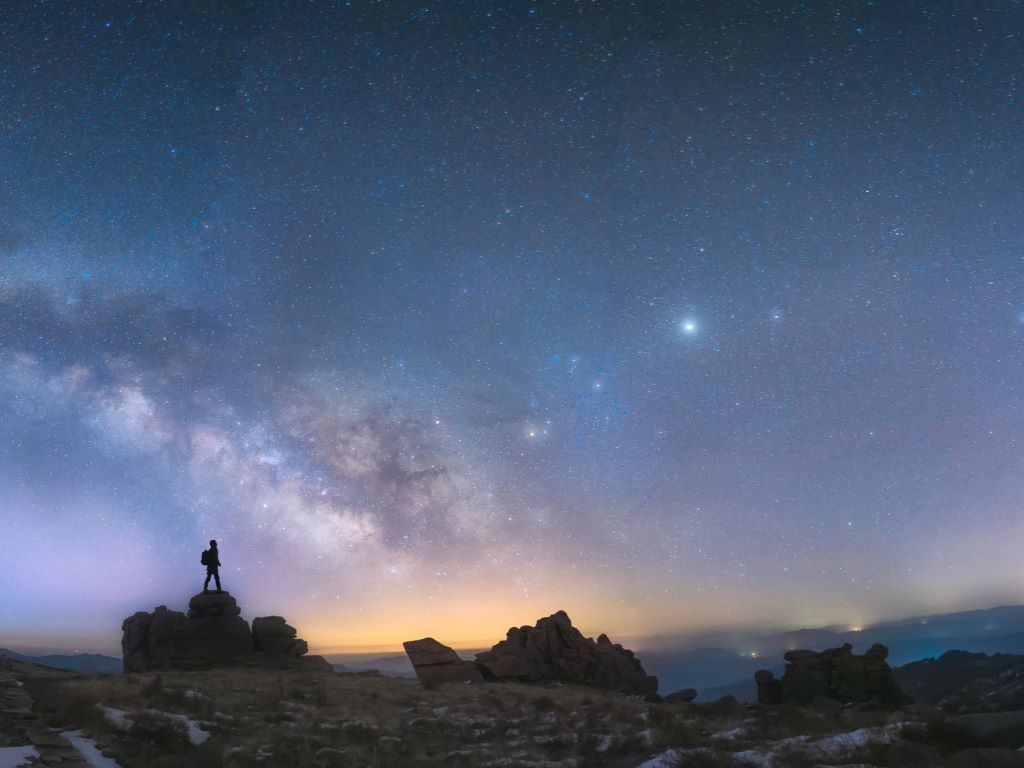
Closing Part One: Knowledge, Verification, and the Learning Universe
As we close Part One of this inquiry into the Verification of Knowledge and prepare for Part Two, let’s acknowledge something fundamental:
The acquisition of knowledge is central to human life, and the verification of that knowledge is central to human development and the evolution of epochs.
As Aviv noted, this exploration began not from a plan, but from a series of inquiries. There is no claim of leadership because of superior intelligence; the inquiry itself leads. That’s a hint of the Integrated Verification System of Life. We don’t claim to know the mysteries of the universe, but simply try to follow where the current of discovery flows.
At a deeper layer, we may begin to recognize the universe itself as a learning system — a theme we explored with David Price Francis in Current Openings #6, The Human Predicament and the Planetary Program. Life evolves through a self-verifying feedback loop. When something works, it gets replicated and becomes available as open-source intelligence for the evolution of the vine of life.
For example, the emergence of a nervous system, once established in one form of life, becomes available across species as a successful evolutionary blueprint.
The threshold we are seeking now is one where we re-integrate kinds of knowing that have been left behind, while also recognizing and cultivating the new forms of knowing that are coming online. This is the journey ahead: integrating ancient and emerging ways of knowing into a living system of verification — one that honors the full spectrum of human and universal intelligence.
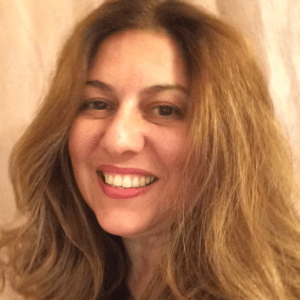
Kyriaki Nikandrou
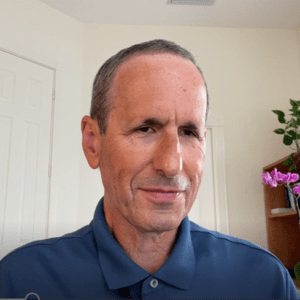
Aviv Shahar
Aviv serves as the Portals' sherpa. He curates transformational journeys and is a storyteller of the epochal evolution culminating at this time. Aviv is the Founder of Aviv Consulting, helping leaders unleash strategic innovation, and is the author of Create New Futures: How Leaders Produce Breakthroughs and Transform the World Through Conversation.
Visit: Aviv Consulting
